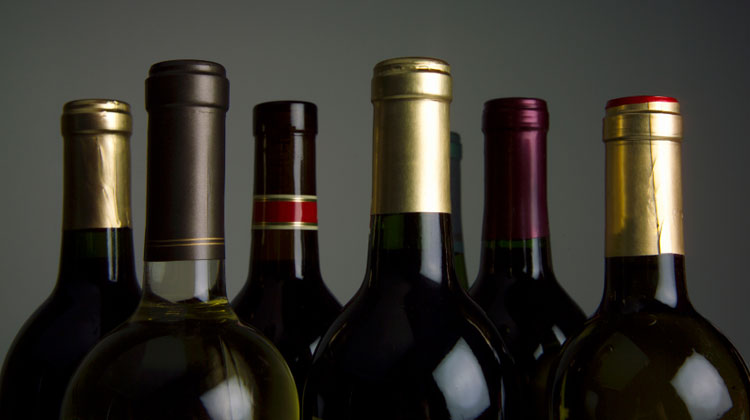 This past Spring, wine educators, sommeliers, and writers gathered for lunch at Barcelona Wine Bar to taste and learn about the wines from Portugal’s Tejo wine region. Located about an hour drive from Lisbon, Tejo lies inland along the banks of the Tejo River (also known as the Tagus River), which flows south from nearby mountain ranges and eventually pours out into the Atlantic Ocean. The river moderates the otherwise hot climate to produce sites well suited for vineyards.
This past Spring, wine educators, sommeliers, and writers gathered for lunch at Barcelona Wine Bar to taste and learn about the wines from Portugal’s Tejo wine region. Located about an hour drive from Lisbon, Tejo lies inland along the banks of the Tejo River (also known as the Tagus River), which flows south from nearby mountain ranges and eventually pours out into the Atlantic Ocean. The river moderates the otherwise hot climate to produce sites well suited for vineyards.
The larger Tejo region is divided into three climatically distinct subregions. Most northern is the Bairro region, where clay and limestone soil dominates on relatively higher elevations. South of the river and below the Bairro, the Charneca region is warmest with dry sandy soil. Nestled in between these larger areas is the Campo region that follows the banks of the river on both sides, where grapes grow in well-drained alluvial soil in a more moderate climate.
At the lunch—hosted by The Wines of Tejo, an association of wine producers from the region—Master Sommelier Eric Entrikin explained that it is Portugal’s diversity of indigenous grapes—as many as 120 “commonly grown” varieties—that makes Portuguese wine so exciting. In addition to the well-known wines of Vinho Verde and Porto, the Portuguese wine spectrum extends from dry crisp whites to rich fuller bodied dry whites, and from lighter fruity styled reds to full-bodied complex red wines suited for hearty meals.
Many of these Portuguese wines are blends—often “field blends,” which means a winery grows and harvests numerous grape varieties together. Largely impossible to identify or separate out these grapes, they are simply vinified together. While field blends certainly can make tasty fine quality wines, single-varietal Portuguese wines allow wine lovers the opportunity to explore the various attributes of these indigenous grapes. In addition, a relatively unique approach to white wine making includes allowing the juice to have some contact with the skin to add flavor, a technique usually only used to make red wines.
The white grapes featured at the tasting included Arinto, which Entrikin compared to Sauvignon Blanc; Alvarinho, which is the same grape as the Spanish Albarinio; Fernão Pires, which offers citrus, peach, and tropical flavor; and Verdelho, which has refreshing acidity and is also used to make Madeira. Red grapes included the full-bodied and rich Touriga Nacional, which is considered one of Portugal’s best varieties; Trincadeira, which offers red fruit flavors; Castelãlo, which produces plum and red fruit flavors; and Aragonês, which is the same as the Spainish grape known as Tempranillo.
The variety of quality wines we tasted demonstrates why exploring Tejo is certainly a good idea, and many of its delicious wines can be enjoyed for a moderate price.
Along with lunch we enjoyed:
2015 Fiuza Alvarinho—Grown in the Campo region, it’s clean and aromatic and offers a refreshingly crisp wine experience with flavors of citrus and green fruit (pear), a hint of something floral along with some minerality. Suggested retail is $11.99.
2014 Casal da Coelheira Branco—Made from a blend that includes Fernão Pires, Arinto, and Verdelho grapes grown in Charneca, this wine’s bright acidity pairs well with a soft round texture and flavors citrus, pear, and some peach. Suggested retail is $10.99.
2014 Casal Branco, Falcoaria Branco—Grown in the sandy soils of Carneca and made with 100 percent Fernão Pires grapes, it offers both secondary or tertiary (development) aromas on the nose, suggesting use of both oak and aging. It offers good acidity, moderate alcohol balanced with toasty oak, and more. It’s delicious and well suited for those who enjoy quality, oak-aged Chardonnay. It’s a bargain at the suggested retail price of just $13.99.
2012 Quinta da Ribeirinha Vale de Lobos Touriga Nacional, VR Tejo—Aromas of red fruit, black fruit, and cedar emerge from this ruby-colored wine that’s produced with 100 percent Touriga Nacional grapes from the Bairro region. It offers red fruit along with mouth-watering acidity, which makes it very food friendly. It paired well with the lamb and beef samples offered at the event. Its suggested retail is just $17.99.
2012 Adega do Cartaxo, Bridao Classico Tinto, DOC do Tejo—A blend of Touriga Nacional, Aragonez, Castelão, and Trincadeira grapes grown in the Bairro region, this deep ruby wine presents a youthful, bright color and black fruit aromas. Black cherry, spice, and loads of vanilla flavors coat the palate. The suggested retail is $8.99.
2011 Quinta da Lagoalva de Cima, Alfrochiero Grande Escolha, VR Tejo—Made with 100 percent of Alfrochiero grapes grown in Charneca, this deep ruby wine has floral aromas (roses, violets), good acidity, blackfruit, cedar and spice. Suggested retail is $42.99.
